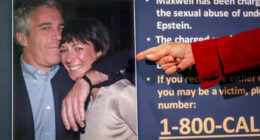
Fire Station 22 will survive.
The Palm Coast City Council on Tuesday voted on a $3.3 million plan that would preserve the old fire station and look to “adaptively reusing the building to serve alternate functions,” in the words of city architect Eric Gebo, while creating 90 new parking spaces as overflow for the nearby Community Center. The 138 parking spaces at the Community Center have proved insufficient for the number and popularity of activities and events there. On average, seven meetings a month are turned away from the center for lack of capacity.
It’s not a cheap option. It’ll cost the city $2.2 million to build the grounds into a parking lot, and another $1.1 million to renovate the old fire station, the single-oldest public building in the city. That’s just for construction. Design costs will be on top of that. Design costs are not known for now. The city is issuing a request for proposals to nail those down.
But the council’s decision is a victory for the Palm Coast Historical Society, whose members fought hard for building preservation. In earlier council discussions, the council had perceptibly hedged over razing the old building, maximizing parking capacity an avoiding renovation costs. It did not expect such ardent affection and advocacy for the old building from the society and residents.
Kathy Reichard-Ellavsky, president of the society, led that battle. “Fire station number 22 helps tell the story of a community that was created by an international conglomerate out of a pine covered swamp, and the civic minded people who gave that community its heart and soul,” Reichard-Ellavsky told the council, referring to ITT, the original builder of Palm Coast starting in the late 1960s. “Fire station number 22 was the first base of operations used for local emergency responders when only a few hundred people lived here in the 1970s. When a new station number 22 is opened a year or so from now and is no longer needed to house fire engines, it could be repurposed to provide the community with a new type of engine–and economic engine. Its highly visible location could help attract visitors and residents to a welcome center and Historical Society Museum to encourage both community and tourist engagement.”
The city is building a new station closer to Colbert Lane. It will seek state appropriations to cover costs of renovations of the older building.
The fire station sits near what used to be the very center of town, before Palm Coast was a town. It is there that, on April 3, 1973, the Palm Coast Volunteer Fire Department was born, with 36 members and a Ford Jaco as its very first fire engine, according to a Palm Coast Fire Department department history. It had more firefighters than annual emergency calls at the time. It wasn’t until 1989 that a second firehouse opened.
“The goal of this design was to keep as many historic trees as possible, provide a maximum number of parking spaces and keep the existing building for an alternate use,” Gebo said.
The second option the council could have opted for would have resulted in a razed building but only 85 additional parking spaces, with room for more, and a lower cost of $1.65 million. If the city opted to add a further 36 spaces, it would cost $1.1 million. The first option is more expensive because the city will be required to “mitigate” for lost wetlands: it must pay $1.1 million to compensate for the wetlands lost on the parcel, buy buying an equivalent parcel for permanent preservation elsewhere. The city has funding for either option.
“We are a city of 107,000 residents and our historical society is camping out in a small building in the back of Holland Park, and they deserve better,” City Council member Theresa Pontieri said. “Our city deserves better, and I think that this is a really good opportunity, not only to have a legitimate Historical Society, but also a welcome center. We don’t have to put the dollars in right now. We can just save the building and work on the dollars in the future.” Pontieri made the motion to approve the option that would preserve the building. Council member Nick Klufas a member of the historical society, seconded.
“But I would also like to warn our council and our future council, be careful with paving over the basketball court,” Klufas said of the single basketball court in back of the Community Center. It sits there, seemingly lonesome, pointless and easy prey for concrete and asphalt fanatics. “It serves a purpose. I play sports at Holland Park and the Community Center. It serves a purpose there. It’s a friendlier environment, if you don’t have to go play basketball down at Florida Park. So I know we had discussed that in the past, but that that basketball court is very important. It serves a role.”
Klufas, cautioning against building too much parking space now, also gave fellow-council members a glimpse into a future when parking around buildings will not be what it is today. He was alluding to a future when, with the advent of self-driving cars, parking will be entirely reengineered, enabling the reclamation of urban spaces from asphalt and vehicles. “So I’m hesitant right now to knock stuff over to build big parking lots, because that whole landscape, as crazy as it may sound, is going to change,” Klufas said.
Cornelia Manfre, a candidate for mayor who has lived in Palm Coast for 25 years–as long as the historical society has existed–enumerated the buildings that have been razed in the city over the years, including the old welcome center that was razed to make room for a CVS. She called it a “a demolition derby place.” She spoke of the value of the firehouse location and its potential uses in the future. “Let’s save our history,” she said.
![]()
community-center-parking





